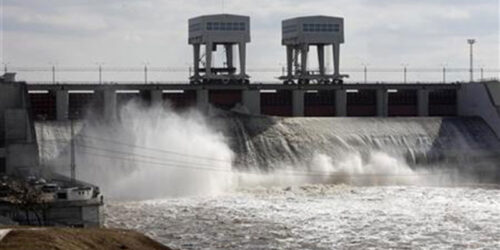Engineering feasibility study and the environmental impact assessment of 300-megawatt Balakot hydropower development project have been completed to get the project into the next phase of construction, The News learnt on Tuesday.
Hagler Bailly Pakistan and a Portuguese engineering consultancy AQUALOGUS in association with Zeeruk International Pvt. (Pakistan) carried out the preparatory works of the project located on the Kunhar river, a tributary of the Indus River, in the Mansehra district of Khyber Pakhtunkhwa.
Asian Development Bank (ADB) in March approved $300 million loan for the project estimated to cost Rs85 billion — said to be the biggest-ever power generation plant in the province.
“With the preparatory work completed, the Balakot hydropower development project is now ready to move ahead,” said an ADB’s document. Improving the energy sector’s efficiency is a focus under the ADB’s country partnership strategy 2021-2025.
The plant will incorporate seismic strengthening and climate-proofing measures and is scheduled to start operating by 2027. It is expected to increase the hydropower share in the energy mix by 1,200 megawatts and at the same time reduce average daily blackouts from 3.2 hours to 2 hours.
During construction, the project will generate more than 1,200 jobs, about 40 percent of which will be sourced locally, and provide livelihood skills training for women, according to ADB.
The scope of the contract was extended to also include detailed studies for the feasibility analysis and extensive topographic and geological surveys. “The complexity of the project required an extensive coordination of communication with different players, including local partners, the executing agency, and ADB,” said AQUALOGUS Managing Director Sérgio Costa. AQUALOGUS was awarded a contract of $2.2 million to undertake project due diligence and prepare full feasibility reports and draft bidding documents.
Pakistan only uses about 9,860-MW of capacity, out of a potential 60,000-MW with the country’s energy mix dominated by thermal power and almost 60 percent of electricity generated from oil-, gas- and coal-fired power plants.
“Pakistan’s geography and geology are favorable – mountainous regions in the north have deep, rocky valleys that are ideal for hydropower generation. Despite the prospect of water scarcity, it’s also a water-rich country – globally only 33 countries have more renewable water. However, Pakistan’s water infrastructure was historically built to cater to the needs of agriculture. Harnessing its huge hydro potential is a rather new development,” said ADB. “The country has tremendous potential to expand electricity generating capacity by developing renewable energy resources. A large percentage of Pakistan’s more than 200 million people lack reliable access to energy, which is key to socioeconomic development. This severely impacts the economy and people’s livelihoods.”
As a signatory to the Kyoto Protocol and the Paris Agreement, Pakistan aims to increase the share of renewable energy in total power generation to 30 percent by 2030.







